
This parent guide supports parents in helping their child at home with the 6th grade Science content.
- Subject:
- Science
- Material Type:
- Reference Material
- Vocabulary
- Author:
- Kelly Rawlston
- Letoria Lewis
- Date Added:
- 10/11/2022

This parent guide supports parents in helping their child at home with the 6th grade Science content.

This resource accompanies our Rethink 6th Grade Science course. It includes ideas for use, ways to support exceptional children, ways to extend learning, digital resources and tools, tips for supporting English Language Learners and students with visual and hearing impairments. There are also ideas for offline learning.

Please make a copy and edit to fit the needs of your students.

Students will engage in and design an aerial glider from a list of materials that will be provided for them. An aerial glider is a mobile vehicle that is suspended in air for a given amount of time, and it travels a targeted distance.This vehicle will demonstrate animal adaptations and how their wings are beneficial for successful flight of that creature in their biomes. Knowledge of these concepts will be crucial for industry related fields such as mechanical, electrical and additive manufacturing engineering in both the public and military sectors. Students will learn the hard and soft skills necessary to be globally competitive citizens and perform at the highest standard in various careers. This lesson should be taught at the conclusion of the ecosystems unit as students will need prior knowledge of animal adaptations and how they must adjust to various environments in order to survive.
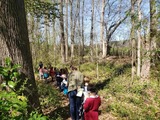
The North Carolina Museum of Natural Science created this resource as part of an online workshop series, but you are welcome to use or modify it for your classroom. It includes a video and written directions for creating nature journals and tips for incorporating them into your classroom. For information on taking any the Nature Neighborhood online workshops for CEUs or EE credit, visit: https://naturalsciences.org/learn/educators/online-workshops.

Students will learn and diagram the male and female parts and functions of the plant. This lesson was developed by Freddy Wang as part of their completion of the North Carolina Global Educator Digital Badge program. This lesson plan has been vetted at the local and state level for standards alignment, Global Education focus, and content accuracy.

An introductory lesson on the adaptations that plants all over the world make in order to search for nutrients and adapt to their environment. Students must place themselves in the perspective of a plant to see the importance of up/down. This lesson was developed by Freddy Wang as part of their completion of the North Carolina Global Educator Digital Badge program. This lesson plan has been vetted at the local and state level for standards alignment, Global Education focus, and content accuracy.
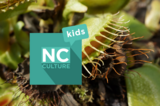
In this short video and accompanying activity and readings, students learn about the Venus Fly Trap and how it adapts to its environment to survive.

In this short video and accompanying activity and readings, students learn about a unique blackwater river in North Carolina - the Lumber River. The river has played an important role for the plants, people, and animals that have called it home.
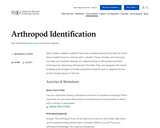
After researching the characteristics of arthropods, students observe arthropods in the field, analyze their data, and learn how to develop their own arthropod collection. The unit is designed to be completed in eight or more sessions. The comprehensive curriculum materials contain information for teachers, including activity tips and an overview of the characteristics that define arthropods.
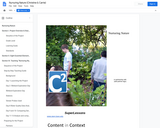
Our project involves students learning about the values of a natural area in their community and producing a public service announcement and map to show its value and how it could be developed.

This course was created by the Rethink Education Content Development Team. This course is aligned to the NC Standards for 6th Grade Science.

This course was created by the Rethink Education Content Development Team. This course is aligned to the NC Standards for 6th Grade Science.

This course was created by the Rethink Education Content Development Team and is aligned to the NC Standards for 6th Grade Science.
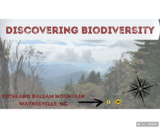
This NC VR Adventure explores the biodiversity of Richland Balsam mountain in Haywood County, NC. VR scenes are built from the Richland Balsam overlook and the Richland Balsam Nature Loop Trail. The following experiences are available for students:
-Biodiversity in plant life, fungi, changing leaf color
-Biometrics for hike including heart rate, distance traveled, pace
-Geography/Topography of this region

Healthy soil gives us many benefits, including nutritious food. During this video, I interview a local farmer to find out how he takes care of his soil. I also demonstrate an activity where students can try their hand at designing their own soil-friendly yard or green space, either at home or at school.
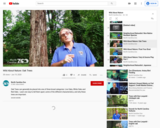
Oak Trees can generally be placed into one of three broad categories: Live Oaks, White Oaks and Red Oaks. Learn one way to tell them apart, some of the different characteristics, and why these trees are important.

Join your Zoo EDventures team inside a colorful, living, and breathing landscape. Learn how a tropical forest feeds, shelters and cleanses us!
We have created helpful clips if you're unable to watch the full video:
5.L.2 Bats and Sapodila Tree (1 min): https://youtu.be/C13Ez25aRwo?t=445
5.L.2 Coffee and Banana Trees (1 min): https://youtu.be/C13Ez25aRwo?t=1511
5.L.2 Vanilla Bean Pollinator (2.5 min): https://youtu.be/C13Ez25aRwo?t=7322
6.L.1 Pineapple (3 min): https://youtu.be/C13Ez25aRwo?t=2127
7.L.2 Pepper Vine (2 min): https://youtu.be/C13Ez25aRwo?t=519